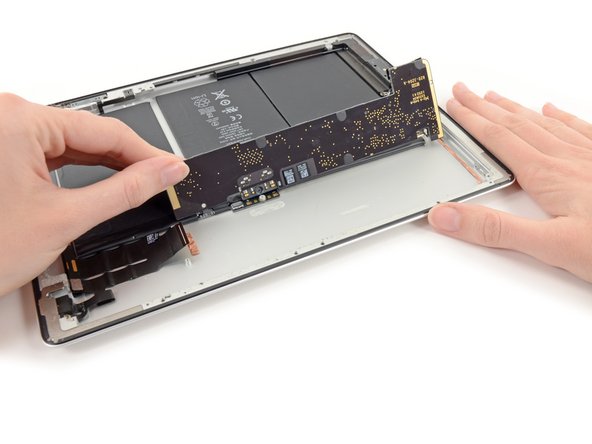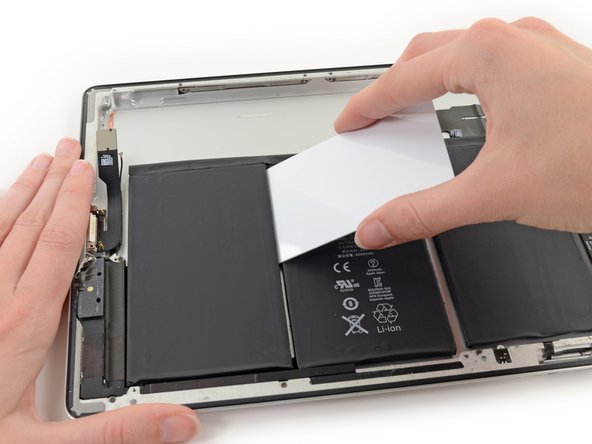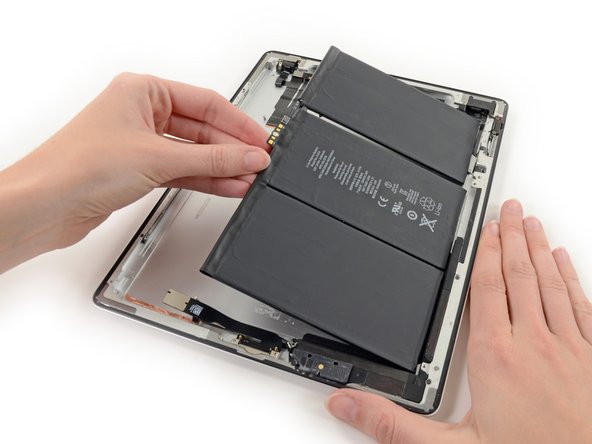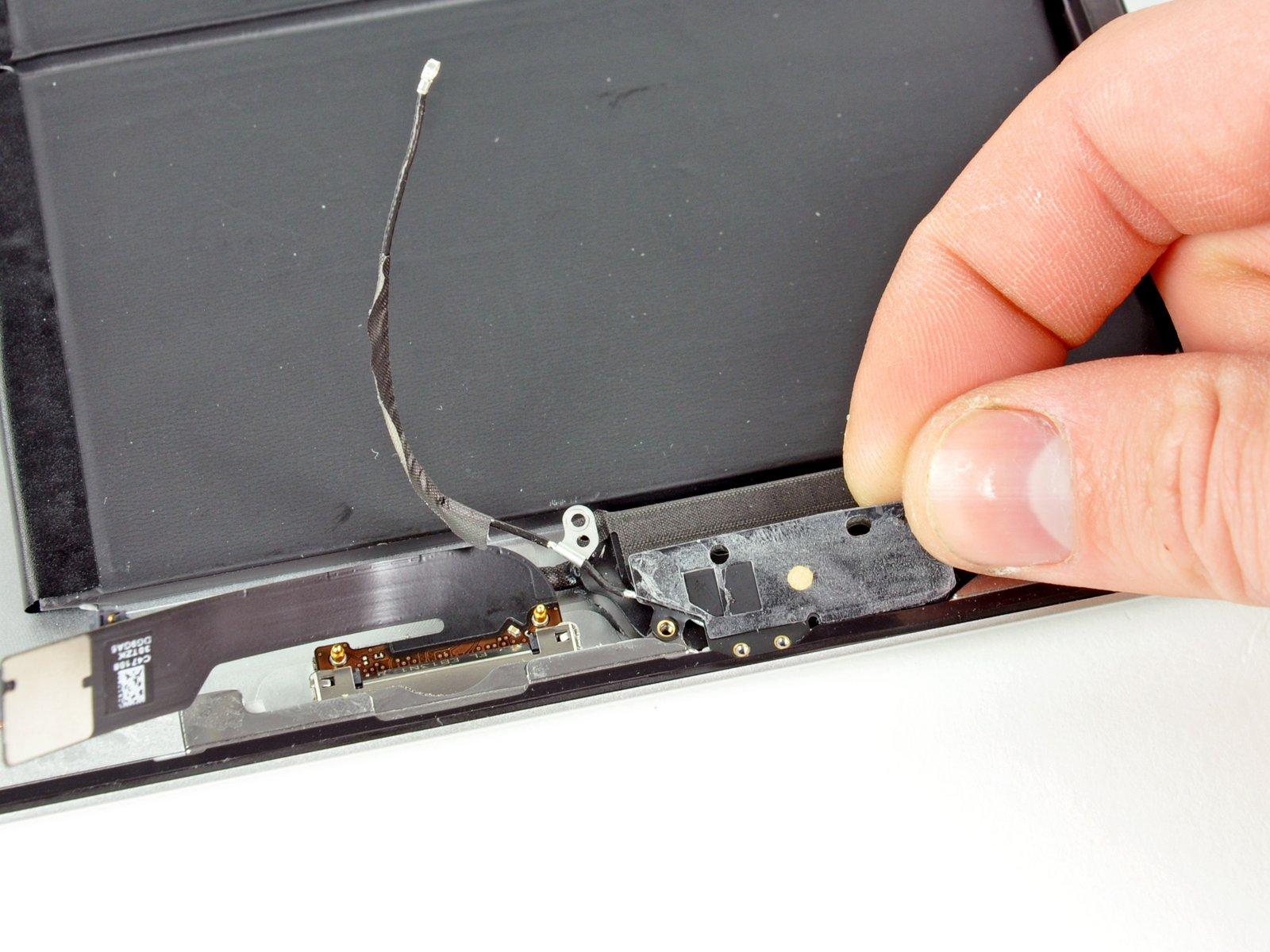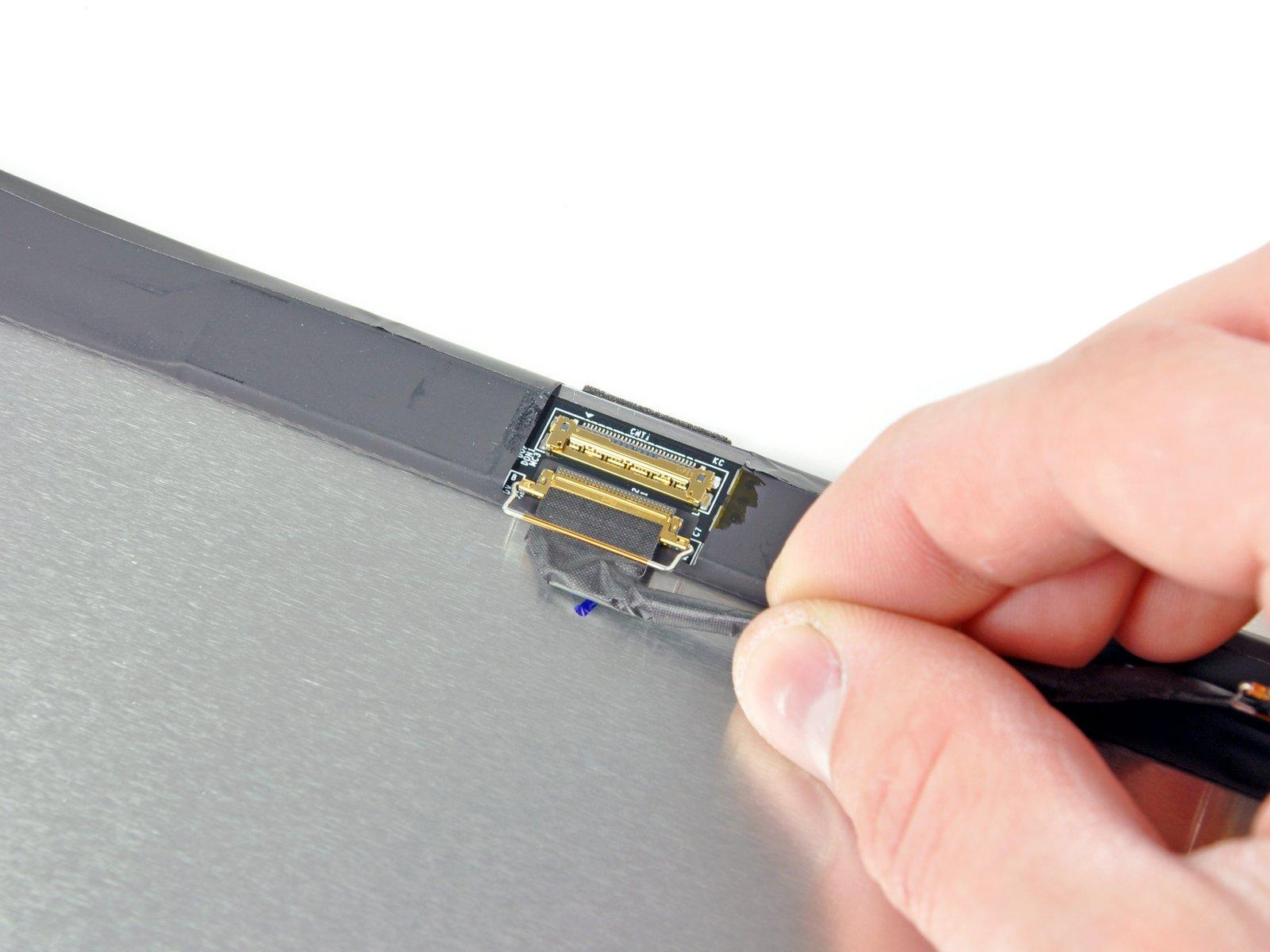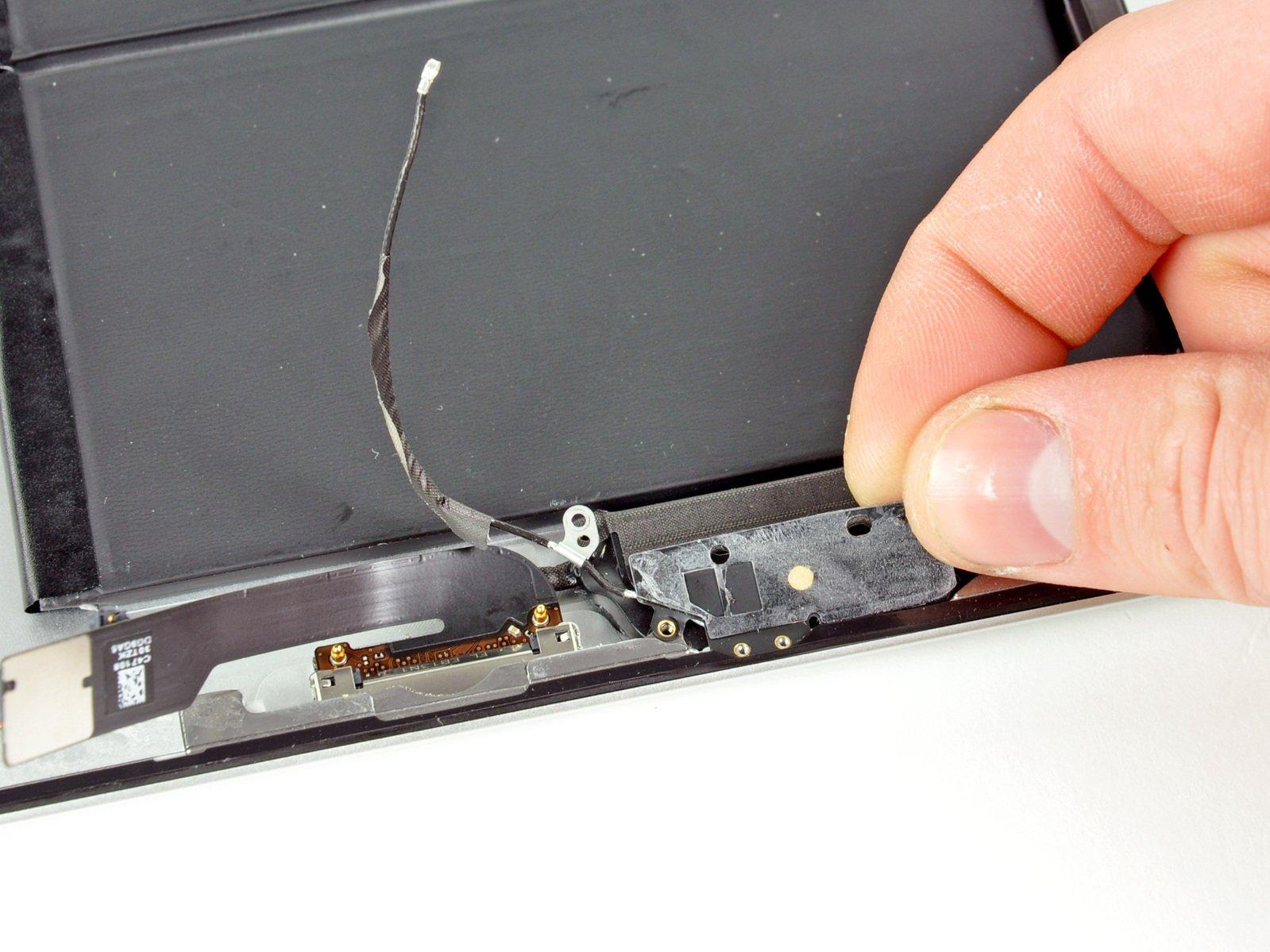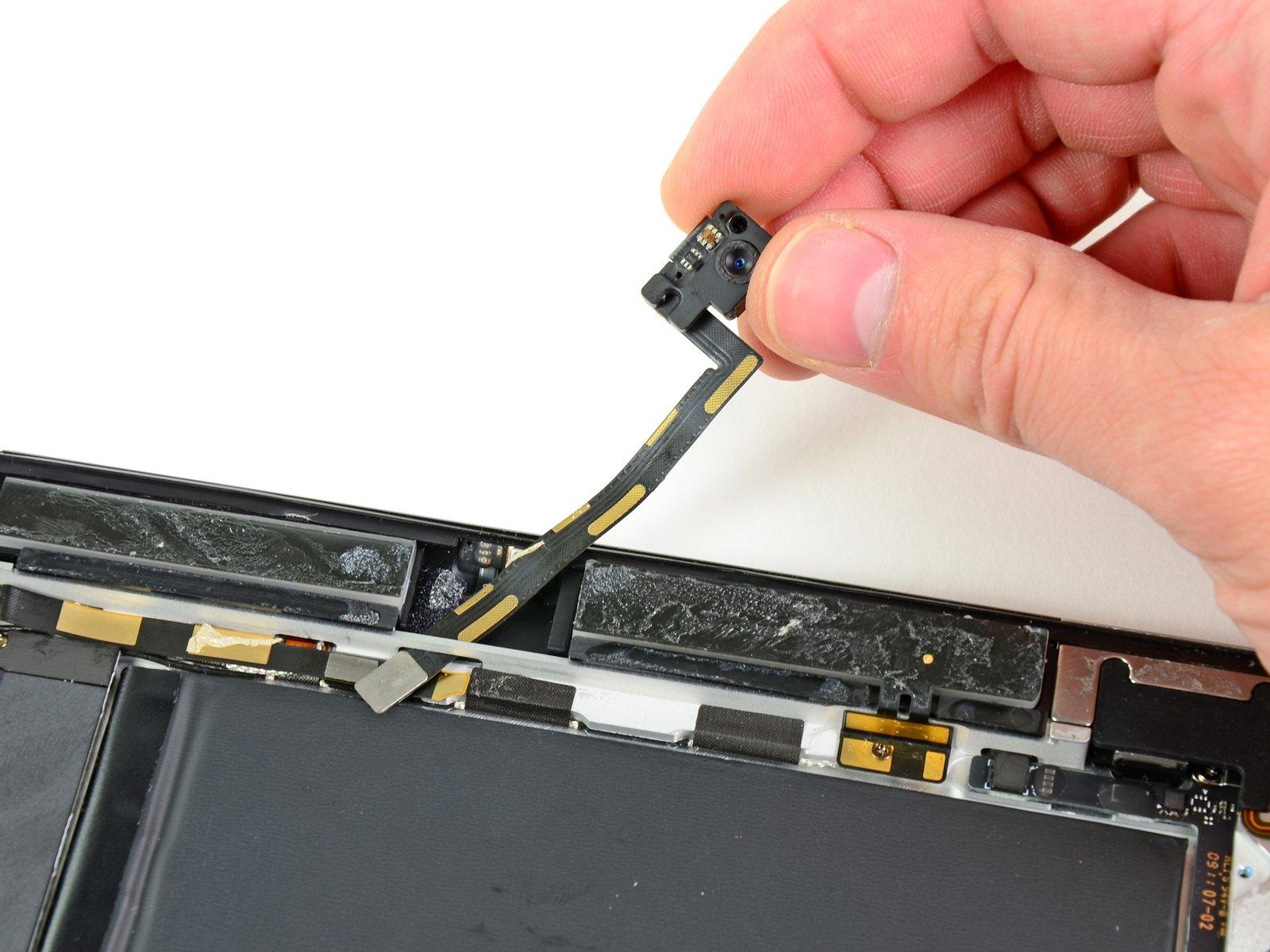How to Replace iPad Wi-Fi EMC 2560 Battery – DIY Guide
Duration: 45 minutes
Steps: 67 Steps
Heads up! Make sure you’re working in a cozy, well-lit space, and keep those tiny screws organized so they don’t go on a little adventure of their own. If you find yourself in a pickle, don’t hesitate to schedule a repair!
Revitalize your iPad by swapping out that tired battery! If you notice any swelling, make sure to handle it with care and follow safety precautions.
Step 1
Before diving into the fun, let’s give your microwave a little TLC! Cleaning it up will help avoid any sticky messes that could hitch a ride on the iOpener. Trust us, a quick wipe down will make everything smoother sailing!
– Pop that iOpener right in the center of your microwave and let it warm up!
Tools Used
Step 2
Hey there! Just a heads up—make sure not to overheat the iOpener during your repair journey. Going overboard could cause it to pop, and we definitely don’t want that! Keep it below 100˚C (212˚F).
If the iOpener looks like it’s been hitting the gym and is a bit swollen, steer clear of touching it.
Still feeling the heat? If the middle of the iOpener is too toasty, just hang tight and let it cool down a bit before you give it another go. A perfectly heated iOpener should keep the warmth for about 10 minutes—just right for your repair needs!
– Pop that iOpener in the microwave for thirty seconds and get ready to roll!
– As you work through the repair, keep that iOpener nice and toasty. Whenever it starts to cool down, just give it another thirty seconds in the microwave to heat things back up!
Tools Used
Step 3
Careful now! The iOpener is going to be pretty toasty, so handle it with care. A trusty oven mitt might just be your new best friend!
– Carefully take the iOpener out of the microwave, making sure to grab it by one of the flat ends to keep your fingers safe from that warm center.
Tools Used
Step 4
Don’t have a microwave? No worries! Just follow this step to warm up your iOpener in a pot of boiling water.
– Grab a pot or pan and fill it with enough water to completely immerse your iOpener.
– Bring that water to a rolling boil, then turn off the heat. Safety first!
– Carefully pop your iOpener into the hot water and let it soak for 2-3 minutes. Make sure it’s all underwater for maximum warmth.
– Using tongs, fish out the heated iOpener from the hot bath—watch out, it’s hot stuff!
– Give your iOpener a good towel dry to get it ready for action.
– And just like that, your iOpener is good to go! If it needs a little extra warmth, just repeat the boiling process: heat the water to a boil, turn off the heat, and let your iOpener chill in the water for another 2-3 minutes.
Tools Used
Step 5
Put on those snazzy safety glasses to keep your peepers safe, and remember to handle that LCD screen with care—it’s more delicate than it looks!
– If your display glass is cracked, let’s keep things in one piece and avoid any cuts while you tackle this repair. Grab some tape and secure that glass!
– Cover the iPad’s display with overlapping strips of clear packing tape until the whole face is protected. It’s like giving it a nice little blanket!
– Now, follow the guide as best you can. Just a heads up, once the glass starts to break, it might keep cracking a bit as you go. If that happens, don’t sweat it—use a metal prying tool to help scoop out the shattered pieces.
Step 6
Just a heads up, since you might be dealing with some sharp glass during this process, we highly suggest rocking a pair of safety glasses to keep those pesky shards at bay. Stay safe and stylish!
– Position the iOpener flat against the right edge of your iPad, making sure it’s nice and snug for optimal contact with the surface.
– Give it about 90 seconds to work its magic before you dive into opening up that front panel.
Tools Used
Step 7
Getting that wedged tip of the opening tool in between the glass and plastic might take a bit of elbow grease. Just stay calm and take your time, gently wiggling the plastic opening tool back and forth as needed. You’ve got this!
– Spot the tiny gap in the iPad’s adhesive ring located in the upper right corner, about 2.0 inches (~5 cm) from the top. It’s like a secret door just waiting for you to open it!
– Now, let’s get your tool in place! Line it up with the mute button and gently slide the tip of a plastic opening tool into that gap between the front glass and the plastic bezel. Just a little nudge to widen that crack is all you need—easy peasy!
Step 9
– With the plastic opening tool snugly positioned between the front glass and the plastic bezel, gently slide a plastic opening pick into that little gap, right next to where the tool is sitting. You’re doing great!
Step 10
– Take out the trusty plastic opening tool from your iPad and gently slide the opening pick further under the front glass, going about half an inch deep. You’re doing great!
Step 12
This adhesive means business, and you might need to put in some muscle. Take your time and be gentle with it!
If you spot the tip of the opening pick peeking out from beneath the front glass, give it a gentle tug to pull it out just a tad. Don’t worry—using the pick this deep won’t cause any harm, but it might leave a bit of adhesive goo on your LCD. Keep it cool and carry on!
– As you warm up the bottom edge with the iOpener, let’s start peeling off that adhesive from the right edge of your iPad.
– Gently slide the opening pick down the edge of the iPad, releasing the adhesive along the way. You’ve got this!
Tools Used
Step 13
As you peel away the adhesive, you might want to slide that warm iOpener back onto the right edge of the iPad. This little adjustment can make a difference, especially if your iPad has had a chance to cool down while you were busy working your magic.
– If your trusty opening pick is feeling a bit clingy with the adhesive, simply give it a gentle ‘roll’ along the side of the iPad. Keep at it, and you’ll be freeing up that sticky stuff in no time!
Tools Used
Step 14
– Before you pop that first opening pick out from the bottom corner of your iPad, slide in a second pick under the right edge of the front glass to prevent the adhesive from getting clingy again.
– Give your iOpener a quick reheat and then position it at the top edge of your iPad.
Tools Used
Step 15
The Wi-Fi antenna is snugly fastened to the bottom right corner of the iPad’s rear case using screws and a cable. Given the way the Wi-Fi antenna is positioned, it’s super important to tread carefully—otherwise, you might end up causing some serious damage to it. Keep your cool and take your time!
– Alright, folks, it’s time to tread lightly! We’re about to release the sticky stuff holding the antenna to the front panel, and we want to do it without causing any chaos to the sensitive bits that connect the antenna to the bottom of the iPad. So, let’s take a deep breath and follow these steps with care!
Step 16
Hey there! Just a friendly reminder: don’t slide that pick too far into the bottom right corner. It could give the Wi-Fi antenna a little too much love and cause some damage. Keep it cool and steady!
– Gently glide the opening pick around the bottom right corner of your iPad to free up that pesky adhesive. You’ve got this!
Step 17
As you slide the opening pick along the bottom right edge of the front panel, keep in mind that the Wi-Fi antenna is lurking close to the corner. If you’re not careful with the adhesive, it might get a little too friendly and end up severed. So, take your time and be gentle!
Just give that pick a little wiggle! Don’t pull it all the way out from under the front glass—leave about 1/8″ (3 mm) still tucked away. It’s like a cozy little secret!
– Gently glide the tip of the opening pick along the bottom edge of the iPad to peel away the adhesive that holds the Wi-Fi antenna in place. You’ve got this!
Step 18
– Once you’ve navigated past the Wi-Fi antenna (that’s about 3″ (75 mm) from the right edge, or just a hop away from the home button), slide that opening pick back in all the way.
– Now, gently glide the pick to the right to break free the adhesive that’s holding the Wi-Fi antenna snug against the front glass.
Step 19
Keep the iOpener’s heating sessions to just a minute at a time, and give it a little breather for at least two minutes before you heat it up again. Your gadget will thank you!
If the adhesive has gotten a bit too chilly along the bottom edge, just give the iOpener a little heat-up to warm things up where you’re working. No biggie!
– Keep on peeling away that adhesive at the bottom of your iPad! Gently pull the opening pick out far enough to navigate around the home button, then slide it back in to about 1/2 inch (10 mm) depth once you’ve passed the home button. You’ve got this!
Tools Used
Step 20
– Keep on peeling that adhesive along the bottom edge of your iPad like a pro!
– Nestle the opening pick snugly under the front glass near the home button. It’s like giving your iPad a cozy little hug!
Step 22
If your adhesive has cooled down too much, just swap out the iOpener at the top edge and keep going. If the iOpener is feeling a bit chilly, give it a quick reheat and get back to work!
– Gently glide that opening pick along the top edge of your iPad, giving it a little nudge to maneuver around the front-facing camera bracket.
– The adhesive in this area is quite stubborn, so you might need to channel your inner superhero strength. Take your time and be cautious—no need for slips that could harm you or your iPad!
– If your opening pick feels like it’s playing hard to get in the adhesive, try ‘rolling’ the pick as shown in step 9.
Tools Used
Step 23
If the adhesive is feeling cozy and warm, go ahead and take the iOpener off your iPad for some hassle-free maneuvering. But if it’s still a bit too clingy, give the iOpener another warm-up and place it on the left edge while you work your magic.
– Keep gently peeling away the adhesive along the top edge of your iPad, then slide that trusty opening pick around the top left corner like a pro.
Tools Used
Step 24
The digitizer cable is hanging out about 2 inches (50 mm) from the bottom of your iPad. When you get to around 2.25 inches (60 mm) from the bottom, it’s time to ease up on that pick!
– Gently glide that opening pick along the left edge of your iPad, freeing up the adhesive as you go! The adhesive here is pretty slim thanks to the digitizer running along the entire left side. Just remember to keep that pick shallow (no more than 1/2 inch or 10 mm) to avoid any accidental damage to the digitizer. You’ve got this!
Step 25
Be super careful! The digitizer cable is hanging out just about an inch (25 mm) from the bottom of your iPad. Take your time and handle with care to avoid cutting this cable.
– With the trusty opening pick still tucked under the bottom edge of your iPad, gently coax the adhesive free from the bottom left corner. You’re doing great!
Step 26
– Grab one of those handy opening picks and gently lift the bottom right corner of your iPad. Once it’s up, give it a little pinch with your fingers to hold it steady.
Step 27
Watch out for any stubborn adhesive still hanging around! Use an opening pick to gently slice through any sticky stuff that might be keeping the front panel in place.
– Grab your iPad by the top and bottom right corners and give that front glass a gentle twist away from the device. It’s like giving your iPad a little hug!
– As you put everything back together, don’t forget to whip out a microfiber cloth and some compressed air to banish any dust bunnies or fingerprints off the LCD before you seal it up with the glass. A clean screen is a happy screen!
Step 28
– Take out those four 2.0 mm Phillips screws that are holding the LCD snugly against the rear case. You’ve got this!
Step 29
The ribbon cables connecting the front panel are tucked away beneath the LCD. To get to them, just flip the LCD over and set it aside for a moment. You’ve got this!
– Gently lift the LCD from the edge closest to the volume buttons and flip it out of the rear case—think of it like turning the page of your favorite book.
– Now, place the LCD face down on the front panel, giving it a comfy spot to rest.
Step 30
Make sure you’re lifting up on those nifty hinged retaining flaps, not the sockets themselves!
The retaining flaps are marked in red in the second image, so keep an eye out for them!
– Gently use the edge of a plastic opening tool to lift up those little retaining flaps on the two digitizer ribbon cable ZIF sockets. You’ve got this!
Step 31
– Grab your trusty plastic opening tool and gently work the edge under the digitizer cable to lift it off the shields on the logic board. Easy does it!
– Now, with a careful touch, pull the digitizer cable away from the adhesive that’s keeping it snug against the side of the rear case. You’re doing great!
Step 32
– Gently wiggle and pull the digitizer ribbon cable straight out of its two cozy sockets on the logic board. You’ve got this!
Step 33
To get that front panel assembly off, you’ll need to gently slide the ribbon cable out from between the case and the LCD. Give the LCD a little nudge to create some extra space, and you’re on your way!
– Gently lift the LCD from the edge that’s furthest from the digitizer cable and swing it back like you’re closing a book—easy does it!
– While you’re holding the LCD up, carefully slide the front panel away from the iPad. Just watch out for that digitizer cable; we don’t want it getting caught on anything!
Step 34
To dive into the iPad’s inner workings, let’s gently pop the LCD back out of the case.
– Gently lift the LCD from the edge nearest to the volume buttons and flip it out of the rear case—think of it like turning a page in your favorite book.
– Place the LCD face down on a clean surface. A soft cloth underneath can help keep it scratch-free and happy.
Step 35
Just a friendly reminder: when disconnecting the connector, make sure to gently pull it straight out instead of yanking it upward. We want to keep everything in tip-top shape!
– Grab your trusty plastic opening tool and gently nudge that display data cable lock upwards. It’s like giving it a little lift!
– Now, with a steady hand, pull the display data cable out of its cozy socket. You’ve got this!
Step 37
– If there’s a tape hanging out, grab your trusty plastic opening tool and gently peel it off the dock connector cable.
– Next, take that same plastic opening tool and slide it under the dock connector cable’s connector. With a little finesse, lift it out of its cozy socket on the logic board.
– Now, it’s time to say goodbye to the dock connector ribbon cable. Just peel it away from the rear panel like a pro!
Step 38
Take care to gently pry just the connector, not the socket on the logic board, or you might end up damaging the socket. Stay focused, you’ve got this!
– Gently lift the speaker cable connector straight up from its cozy spot on the logic board.
Step 39
– Time to tackle those pesky screws! Let’s get them out of the way:
– Next up, gently take off the metal bracket from the rear case. You’re doing great!
Step 40
– If you see it there, grab your trusty tweezers and gently peel away the piece of tape hiding the end of the headphone jack/control board cable. You’ve got this!
Tools Used
Step 41
Just a friendly reminder: pry upwards on the hinged retaining flap, not the socket itself. You’ve got this!
– Grab your trusty spudger and gently flip up the retaining flap on that headphone jack/control board cable ZIF socket. You’ve got this!
Tools Used
Step 42
– Gently ease the tip of your spudger under the headphone jack/control board ribbon cable to give it a little nudge and disconnect it. You’ve got this!
Tools Used
Step 43
– Unscrew those two 2.1 mm Phillips screws holding the second metal bracket snug against the rear case, right by the digitizer cable socket.
– Gently lift that metal bracket away from the rear case and set it aside.
Step 44
– Gently slide the edge of a plastic opening tool under the logic board and give it a little nudge to lift it away from the adhesive holding it to the rear case. You’re doing great!
Step 45
Hold your horses! Don’t try to take it off just yet—there’s still an antenna cable hanging out with it.
– Gently lift the logic board out from the back of the case and give it a little flip towards the battery. You’ve got this!
Step 46
– Gently use the tip of a spudger to lift the Wi-Fi antenna connector away from its cozy little spot on the logic board.
– Carefully detach the logic board from the case and set it aside.
Tools Used
Step 47
– Give that iOpener a warm-up session in the microwave for one minute.
– Once it’s nice and toasty, place the iOpener on the back of your iPad, just a smidge to the right of center (that’s the side away from the rear-facing camera). Let it chill there for 90 seconds to loosen up that battery adhesive.
– Next, slide the iOpener to the center of the back of the iPad and let it hang out for another 90 seconds.
– Finally, shift the iOpener to the left edge (where the rear-facing camera is) of the back of the iPad and let it rest for another 90 seconds.
Tools Used
Step 48
As you dive into this procedure, you’ll be gently sliding some sleek plastic cards between the battery and the back of the iPad to loosen up the adhesive that’s keeping the battery snug. Just remember to keep those cards nice and flat—bending the battery is a no-go, as it could lead to some not-so-fun chemical spills!
If you’re feeling a bit of resistance, don’t sweat it! Just give your iOpener another round of heat and try again. This will help the adhesive loosen up and make your life a whole lot easier.
– Turn the iPad back over and slide a plastic card between the bottom battery cell and the rear case.
Tools Used
Step 49
– Begin by locating the battery cell that’s nearest to the dock connector. Gently slide a plastic opening tool under the edge of the battery that’s closest to the logic board area, creating just enough space to slip in a plastic card. You got this!
Step 50
– Gently slide the card into the corner of the case and push it inward to break apart the adhesive a bit more. You’re doing great!
Step 51
– Gently maneuver the card around the corner and slide it along the edge of the cell case.
Step 52
– Slide that card into the bottom corner, right by the headphone jack, to give the battery cell a little nudge and free this side up!
Step 53
– Gently glide the card along the edge of the cell to loosen any stubborn adhesive that’s still hanging on. You’ve got this!
Step 54
– Carefully wiggle the end of the battery cell away from the case, like you’re giving it a gentle nudge to let it know it’s time to part ways.
Step 55
– Carefully lift the corner of the battery away from the case to start releasing the last side of the dock side cell.
Step 57
– Slide a second plastic card gently under the edge of the battery cell that’s closest to the headphone jack, right next to the logic board void. You’ve got this!
Step 58
– Gently wiggle the card into the corner to break the adhesive’s grip on the cell. You’ve got this!
Step 59
– Gently nudge that corner of the cell free from its cozy case.
Step 60
– Gently slide the card under the opposite corner to peel away even more of that sticky adhesive.
Step 63
– Gently slide the card under the center cell, right where the cable is hanging out.
– Carefully insert the card towards the far end of the battery to get things moving.
Tools Used
Step 64
– Carefully lift the bottom of the cell away from the case.
– Gently nudge the dock side corner of the cell to break free from the adhesive.
– Give it another little nudge near the cable to help loosen the cell even more.
Step 65
– Gently slide a corner of the card beneath the top edge of the cell, right by the logic board void—like a ninja on a mission!
– Now, use the screw post as your trusty pivot point to break free the last bit of adhesive holding the battery connector board in place. You’ve got this!
Step 66
Take it easy on that battery connector board—no need to give it a workout! And when you’re gently prying around the screw post on the aluminum rear case, just remember: slow and steady wins the race!


























































































